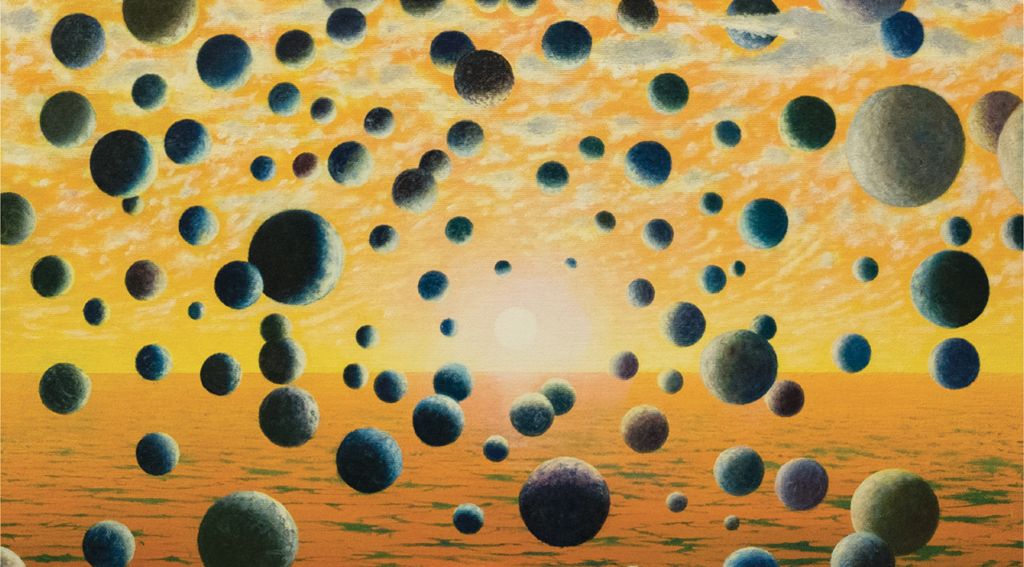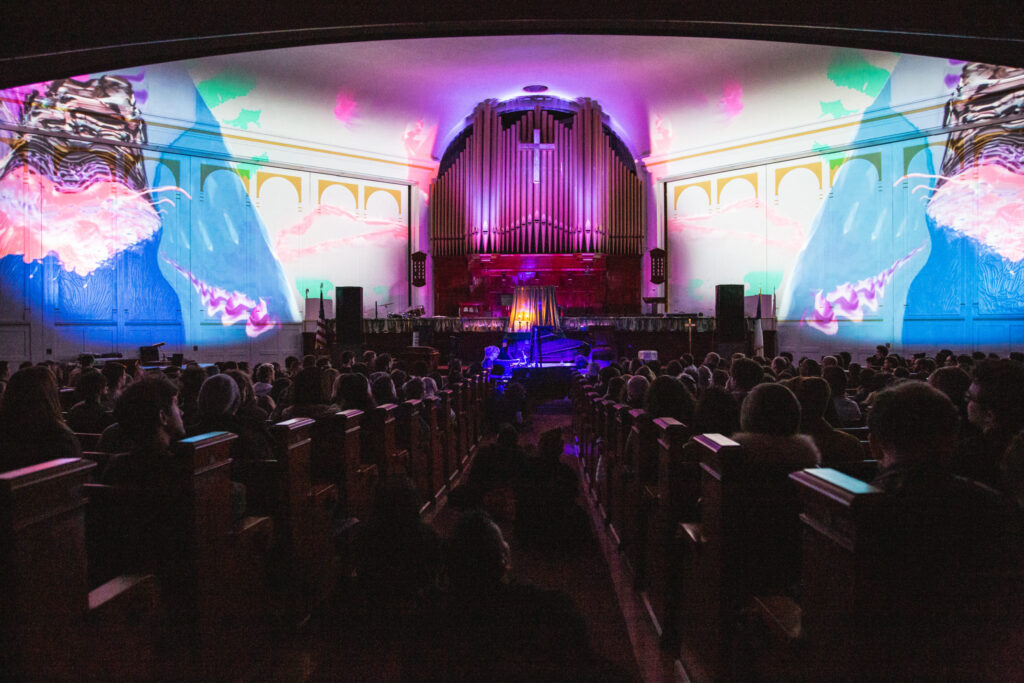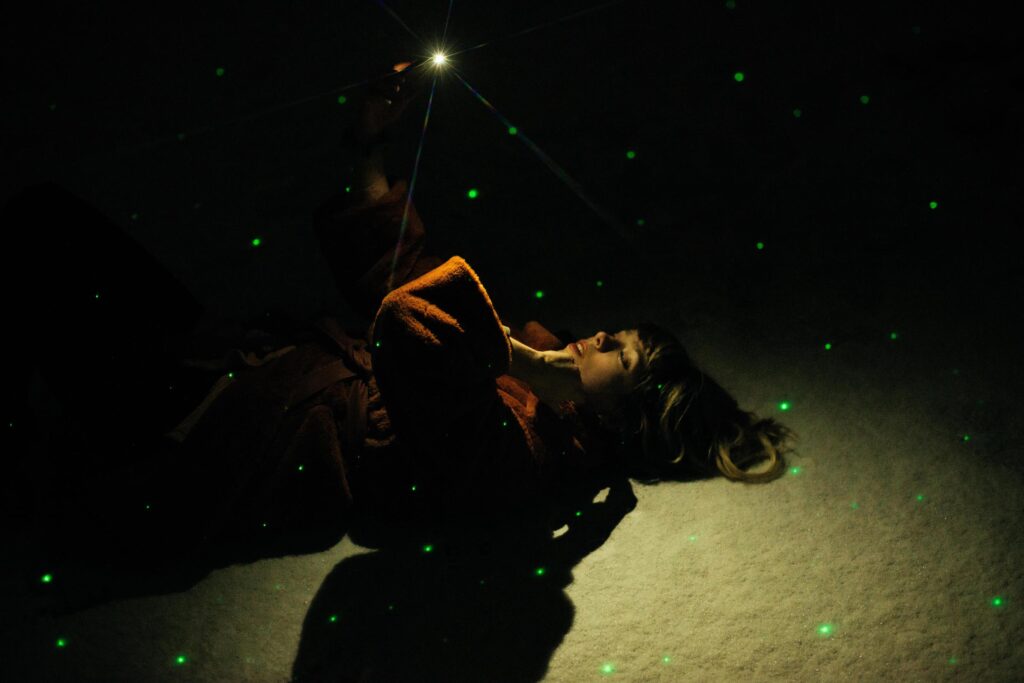In art and music, it can feel as there’s an unwritten code: we must be self-reliant and self-actualized in order to make good work. Creativity is necessarily a result of a metamorphosis into individual, and in turn, the individual is easier to brand. In our social lives, we aren’t ready to enter relationships until we’ve mastered ourselves as closed systems, gotten rid of the crutches. I myself have long idealized emotional self-sufficiency. But between so much public encouragement of self-work in the style of Eat Pray Love and Hollywood notions of life-changing romance, it can be confusing to engineer the “right” kind of destiny.
The fact is that we are shaped by the energy and the touch of others, and so it should follow that we are unfinished products continually in need of reciprocal impact. To admit reliance on other humans is to come to terms with vulnerability. However, it seems there’s increasing cultural support for this. Jon Davies aka Kepla wrote a recent article for FACT observing how often the term “interdependence” had recently been used in music-world discourses.[1] Mat Dryhurst, a strong proponent of collectivizing digital musical networks, has written about excessive self-reliance and self-interest in the music industry. In an Instagram post entitled “Interdependent Music,” he reframes a line spoken by the character Manabu Horikita in the anime movie Classroom of the Elite: “As usual, you’ve mistaken isolation for independence.” PROTO, Dryhurst’s latest album with Holly Herndon, is accordingly a model of communal, familial music-making. As a contributor to the album, I can attest to the joy of its collectivity.
In Precarious Life, Judith Butler discusses how personal loss can expose the vulnerability and interdependence at our core: “We are not only constituted by our relations but also dispossessed by them as well…Let’s face it. We are undone by each other. If we’re not, we’re missing something…”.[2] I receive a daily wellness newsletter via email. Every time I come close to ending my subscription, something in it justifies the clutter. Today’s edition is entitled “Relying on Others,” and it expresses for a lay audience what Butler says for an academic one: “It takes wisdom and strength to surrender to our own helplessness and to accept that we, just like every other human being, have limitations. The gifts of surrender are numerous…”
The surrender at the heart of interdependence can be taken to the next level: we can express reliance not on only other humans but even more so on the world, on chance, on mystery. In doing this, the risk feels greater—neither awe nor reverence is particularly associated with intellectual rigor or social clout.
Yet under the umbrella of “spirituality,” remnants of religious ritual are now increasingly en vogue, and the privateness of belief increasingly public. Environmentally minded new-age and ambient music are enjoying a healthy resurgence, at least among mostly-white experimental music audiences. The labels Music from Memory and RVNG have reissued and popularized 1980s classics like Suso Saiz’s Odisea (2016) or Pauline Anna Strom’s Trans-Millenia Consort (2017), and much new work vacillating between the ironic and the genuine is being made with these originals in mind. Concert series in Berlin, New York, Rio de Janeiro, or Zurich showcase “transcendent”[3] music in churches; Ellen Arkbro, Kali Malone [see zweikommasieben #19], Kara-Lis Coverdale [see this issue], and Sarah Davachi all perform their work on old church pipe organs. And this is all against the backdrop of a wider turn to the spiritual in cultures around self-care, yoga, meditation, and astrology.
In 1917, sociologist Max Weber identified “problems of meaning” as a result of what he saw as increased disenchantment in the modern world. He argued that a metaphysical “Hinterwelt” was being replaced by modern science, and that therefore “processes (…) simply ‘are’ and ‘happen’ but no longer signify anything”.[4] Dick Houtman and Stef Aupers argue that when there is a perceived lack of meaning but an abundance of “true” information, people build their own senses of meaning by turning to alternative spirituality, to art, to other forms of community.[5] The Trump years also showed us that populism can be a vessel of much-needed cultural significance (Trump was said to have done particularly well in rural areas with few community and religious centers).
In experimental music’s new spiritualism, variety and lack of religious specificity seem to be key, just as they were in the new-age movement that emerged in the 1970s. Sociologist Thomas Luckmann wrote that new-age spirituality “collects abundant psychological, therapeutic, magic, marginally scientific, and older esoteric material, repackages them, and offers them for individual consumption and further private syncretism.”[6] Another sociologist, Adam Possamai, likewise thinks of new-age spirituality as “religious consumption a la carte.”[7] In the revival of a new-age music scene, the aesthetics of religious and spiritual ritual are likewise adopted and remixed without specificity or textual content—a mere assemblage of vibey spaces and cryptic symbols—as if all that matters is the feeling of sacredness. Sound itself is the only signifier, and it’s open-armed for interpretation.
It is within this framework that it is culturally safe, even particularly on-trend, for the LA-based artist Ana Roxanne to name her NTS radio show “Devotional Hour.” Yet the word “devotional” implies a subject at the receiving end. To what or whom is Roxanne devoting her time and music, and why exactly are we going to church? Does it even matter?
What is it, in the first place, to devote oneself? According to Merriam Webster, it is to “set apart for a special and often higher end,” and to “give over.” The connotation is one of voluntary humility, even loss of self, in the face of something vaster. The devotional act of giving is, theoretically, always willing, always positive. Devotion is, maybe, a commitment to awe, a covenant with wonder.
The musicologist Kofi Agawu says that to perform music is “to stage a departure from an ordinary realm into a marked one”.[8] In some senses, this act of marking, of transitioning out of the everyday, is always inherently devotional. It’s sacralization. In a recent conversation, the musician and actor John Christopher Morton told me that as a child, on Christmas morning he’d wake up to find his presents from Santa Claus (most of them action figures) set up in a kind of installation under the tree. When he eventually discovered that it wasn’t Santa but rather his own father who had unboxed and carefully positioned the toys, he was in awe. He came to think of his father’s gesture as a model for performance, and he now identifies this experience as foundational to his own desire to make music and to act. I thought it was a beautiful theory of performance: performance as creative giving. Performance, in a sense, as always devotional.
Yet even within the marked realm of music or theatre, there are clearly different modes of devotion. An anonymous 19th-century quote reads, “the energies which fail in finding a human object of domestic adoration become the devotional energies of the world.” In the last phase of my formal musical training, I studied vocal ensemble singing in Switzerland. Ten or so of us gathered every month to learn medieval and Renaissance music. I had been excited about the early repertoire, which I always loved for its drama. But we ended up focusing only on madrigals (secular polyphonic pieces written for several voices), which find “human object(s) of domestic adoration”: a true love, a nymph or shepherd. What I craved instead was to fail to find this domestic object of adoration and to have to look elsewhere. I wanted to devote myself musically on a larger and more existential scale. I left the vocal ensemble class and began working harder on my own music, with my musical upbringing as a model.
As a child I was surrounded by a wide range of music, from jazz to Jock Jams to Bach. I’m a “PK,” or “preacher’s kid,” and I grew up going to church. My two younger siblings sang in an Anglican-style men & boys’ choir. The hundreds of people in the congregation would sing hymns in the vast, cathedral-like space, propelled by the power of the organ. Rarely did I pay attention to the words of the hymns, but the unison singing alone felt like it wanted to go beyond “domestic adoration.” The stakes were as high as the ceiling. Ever since these childhood experiences I’ve been drawn to impactful, cavern-filling music. For me, organized religion provided a model for communally oriented musical ritual. The traditions I was exposed to used music on a large scale in order to access a depth of feeling and to communicate support amidst uncertainty. Music was a refuge, a facilitator of devotion and catharsis. Music occupies this role in club culture, too, and hence I’ve also found a home on the dance floor over the years.
Ana Roxanne also grew up going to church, as did Alice Coltrane, one of the mothers of ecstatic music. I cannot speak for the two of them, but I consider my music devotional in a long tradition of devotional music, without any particular recipient or object of worship in mind. There is inherent devotion in the act of longing for ritual—devotion to the tradition of people devoting themselves collectively to mystery or love or whatever it may be. After all, at the altar of the Ambient Church is not a religious relic but rather the devotional performer. The devotion goes beyond just the music and beyond just the people and becomes self-referential, timeless in its memory of awe in childhood.
Under the alias UCC Harlo, New York based musician and musicologist Annie Garlid released her debut album United via Subtext in 2019. A few weeks ago, she remixed Know V.A’s track “Hibernation”, released via Knives. More details on Garlid and her work can be found on her website: https://www.anniegarlid.com/
Garlid’s essay “High Ceilings and High Stakes” initially was featured in zweikommasieben #21. Copies of said issue (and more) can be ordered here: https://praesenseditionen.ch/
[1] Davies, Jon. “Interdependence, or How I Learned to Love Again on the Dancefloor”. FACT, 20. December 2019, https://www.factmag.com/2019/12/20/interdependence-or-how-i-learned-to-love-again-on-the-dancefloor/. Accessed 26. February 2020.
[2] Butler, Judith. Precarious Life: The Powers of Mourning and Violence. London, Verso, 2006, p. 23-24.
[3] From the website of NYC’s Ambient Church series, https://ambient.church/. Accessed 26. February 2020.
[4] Weber, Max. Economy and Society (Two Volumes). Berkeley, University of California Press, 1978 (1921), p. 506.
[5] Houtman, Dick, and Stef Aupers. “Religions of Modernity: Relocating the Sacred to the Self and the Digital.” In Religions of Modernity: Relocating the Sacred to the Self and the Digital. Houtman, Dick, and Stef Aupers, Eds. Brill, 2010, pp. 1-29.
[6] Luckmann, Thomas. “The Privatisation of Religion and Morality”. Edited by Paul Heelas, Scott Lash, and Paul Morris, Detraditionalisation: Critical Reflections on Authority and Identity. Oxford, Blackwell, 1996, p. 72–86.
[7] Possamai, Adam. “Alternative Spiritualities and the Cultural Logic of Late Capitalism”. Culture and Religion, 4 (1), 2003, p. 31–45.
[8] Agawu, Kofi. The African Imagination in Music. Oxford University Press, 2016, p. 29.


